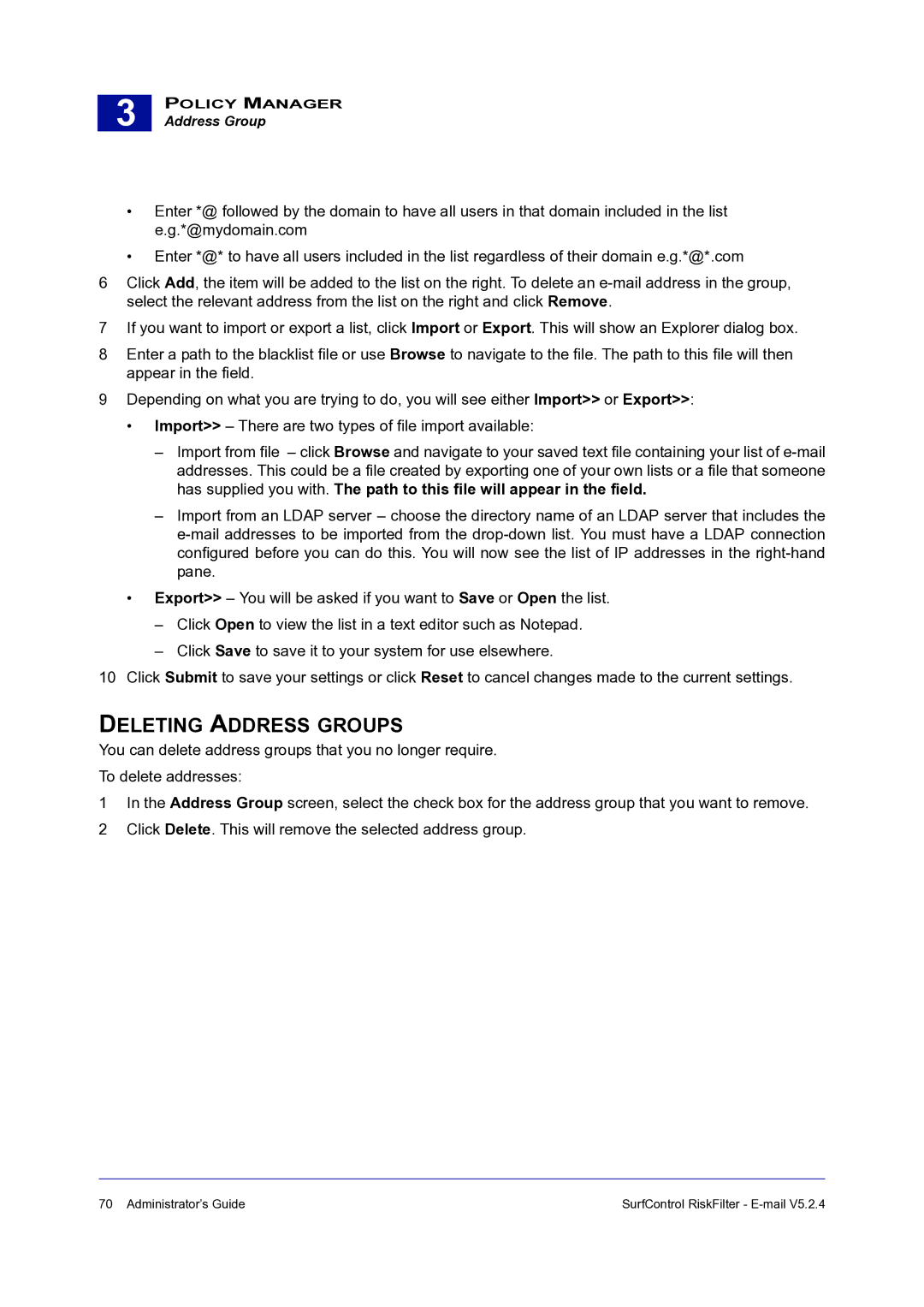
3 |
POLICY MANAGER
Address Group
•Enter *@ followed by the domain to have all users in that domain included in the list e.g.*@mydomain.com
•Enter *@* to have all users included in the list regardless of their domain e.g.*@*.com
6Click Add, the item will be added to the list on the right. To delete an
7If you want to import or export a list, click Import or Export. This will show an Explorer dialog box.
8Enter a path to the blacklist file or use Browse to navigate to the file. The path to this file will then appear in the field.
9Depending on what you are trying to do, you will see either Import>> or Export>>:
•Import>> – There are two types of file import available:
–Import from file – click Browse and navigate to your saved text file containing your list of
–Import from an LDAP server – choose the directory name of an LDAP server that includes the
•Export>> – You will be asked if you want to Save or Open the list.
–Click Open to view the list in a text editor such as Notepad.
–Click Save to save it to your system for use elsewhere.
10Click Submit to save your settings or click Reset to cancel changes made to the current settings.
DELETING ADDRESS GROUPS
You can delete address groups that you no longer require.
To delete addresses:
1In the Address Group screen, select the check box for the address group that you want to remove.
2Click Delete. This will remove the selected address group.
70 Administrator’s Guide | SurfControl RiskFilter - |
